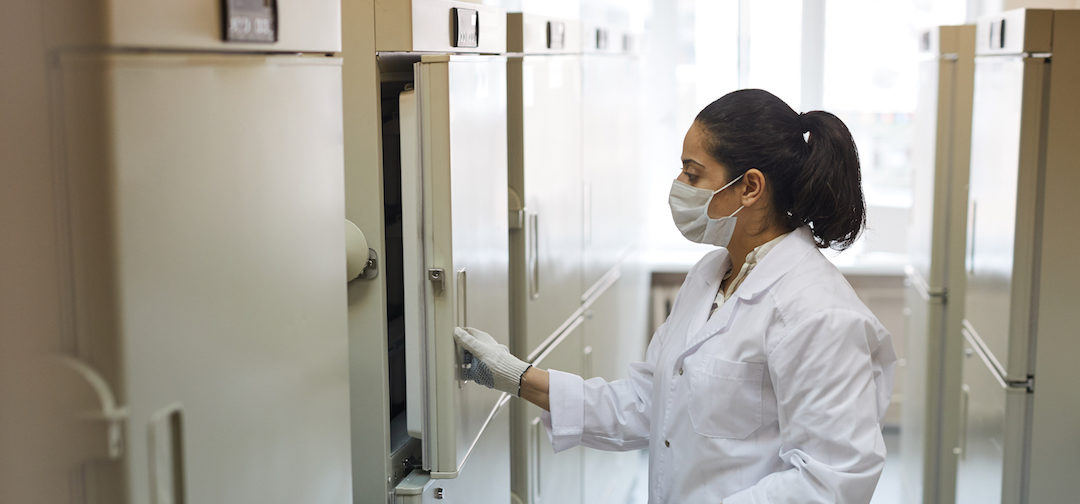If you’re responsible for the cold storage of inventory, you know how important it is to maintain proper temperature. You take precautions to manage temperature but what happens when no one sees the threat coming, and it hits at the worst possible time?
We’re all doing more with less, especially now with the staff shortages many are facing. When we’re short-staffed the last thing we need is an emergency. Diverting staff to manage a refrigeration breakdown puts additional stress on staff and management and negatively impacts morale.
Initially, the implementation of smart technology was considered an added benefit to help staff better understand and manage their responsibilities. This, in turn, would allow them to safeguard refrigerated inventory more efficiently and effectively. But now, it’s undeniable that these technologies are becoming a critical part of day-to-day operations and are necessary to assure vital inventory is protected while effectively managing staffing resources.
Standard remote refrigeration monitoring provides real-time oversight of temperature inside chilled storage empowering staff with real-time alerts when the temperature rises or falls beyond pre-set thresholds. Door monitoring is also valuable allowing you to know when inventory is accessed and assures that doors are closed properly. The remote monitoring system typically communicates to the Internet via cellular network or WiFi. Data is then transferred to the cloud for storage, retrieval and analysis.
In some industries such as the heavily regulated food, beverage and pharmaceutical segments, there are legal requirements or standards that must be met. It’s vital that monitoring and logging of data confirm that no temperature excursions have occurred. A remote refrigeration monitoring system can ensure compliance with the various regulatory standards from agencies such as the FDA and CDC. The data collected is compiled and can be used to produce accurate and complete reports allowing staff to focus on more productive responsibilities.
Temperature Measurement, Recording and Data Storage
Old Methodology: Manual entry of temperature readings utilizing staff & management time costs hundreds of dollars per year, per unit. Many companies struggle with maintaining staff compliance and accuracy. Archiving & retrieval of data is cumbersome, time consuming and costly.
OneEvent: Sensors provide accurate detailed data stored in the cloud for compliant, reliable and cost-effective retrieval, analysis and reporting. Door open and close sensors and reporting provide valuable insights into behaviors that may be generating safety issues and wasting energy.
Automated Temperature Monitoring
Old Methodology: Basic digital monitoring systems notify staff after an excursion and possibly after food, medicine or other vital types of inventory have been compromised.
We’re all aware of the costs due from the loss of compromised inventory. But losses due to temperature excursions are far greater than the cost of the inventory alone. Staff and management are required often move inventory to other storage options. In healthcare, staff and management are required to comply with reports and verify the efficacy of the inventory. Recent estimates show the cost for healthcare staff and management time is thousands of dollars for even a small loss. In addition, the paperwork and follow up necessary after significant excursions are a distraction from leadership and staff’s primary responsibilities.
OneEvent: Provides real time measurements and alerts sent to a smartphone to notify of issues with temperature and/or door open past the desired duration and before contents are damaged. Detailed data logging provides verifiable historic data and flexible, rapid retrieval of all temperature readings and excursions.
THE EVOLUTION OF MONITORING TECHNOLOGY
Fortunately, we don’t have to settle for just real-time alerts to discover that we have a problem. With the advent of predictive analytics, it is now possible to have all the features and benefits of a full-service refrigeration monitoring system with new, cutting-edge benefits.
Predictive Analytics for Advance Notice of Equipment Failure
Old Methodology: Little information is provided on the efficiency of the of the unit and no advance notice is provided of breakdowns.
OneEvent: By digitally monitoring the temperature of refrigerators and freezers a wealth of valuable information is available. For example, data can reveal if a unit is running too cold, too warm or is in need of service. Measuring and managing this data can provide insightful information which can help you prevent expensive breakdowns in advance and reduce energy costs.
One of the primary causes of improper refrigeration is the breakdown of the unit itself. With new Internet of Things (IoT) technology, OneEvent generates predictive analytics within their Thermo Heartbeat® to provide vital information about a unit’s health.
THE THERMO Heartbeat® USES ADVANCED TECHNOLOGY TO DETERMINE AND COMMUNICATE THE FOLLOWING CONDITIONS:
- The refrigeration unit is running normally
- The unit is running too cold, or too warm
- The unit’s temperature is drifting and will result in an excursion within 7, 15 or 30 days
Predictive analytics can provide advance notice of a refrigerator or freezer’s health and propensity for failure. This advance notice is now more important than every with the staffing shortages and high demand placed on refrigeration repair companies. Many repair companies are having significant scheduling issues and are not as responsive as they have been in the past. In addition, after hours and rush service, when available, are at a much higher cost.
The benefits of predictive analytics are proving effective at preventing potentially disastrous excursions and expensive off-hours or urgent repair.
Put predictive analytics to work for you to reduce loss, increase productivity, save time and money. Our customers tell us because of our system they, and their staff, sleep better at night because they save money by preventing expensive losses and can anticipate issues before equipment breaks down.

